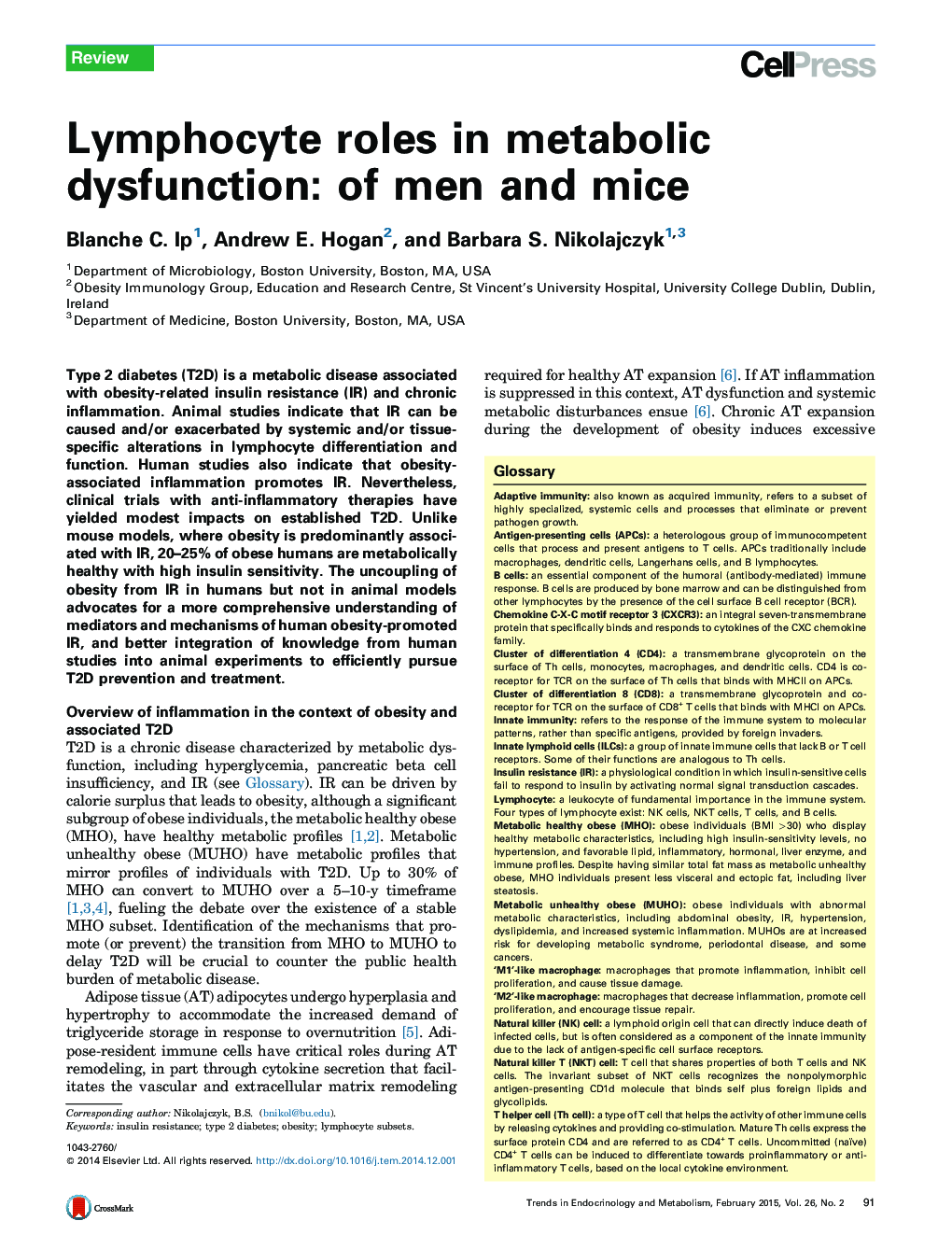| Article ID | Journal | Published Year | Pages | File Type |
|---|---|---|---|---|
| 2810245 | Trends in Endocrinology & Metabolism | 2015 | 10 Pages |
•Lymphocytes have complex regulatory roles in obesity-associated insulin resistance and type 2 diabetes pathogenesis.•Obesity differentially impacts the frequencies and behaviors of lymphocyte subsets.•Lymphocytes interact with other immune cells and with adipocytes to regulate adipose tissue inflammation.•Differences between type 2 diabetes in animals and humans indicate the value of a bedside-to-bench approach to maximize clinical impact of future studies.
Type 2 diabetes (T2D) is a metabolic disease associated with obesity-related insulin resistance (IR) and chronic inflammation. Animal studies indicate that IR can be caused and/or exacerbated by systemic and/or tissue-specific alterations in lymphocyte differentiation and function. Human studies also indicate that obesity-associated inflammation promotes IR. Nevertheless, clinical trials with anti-inflammatory therapies have yielded modest impacts on established T2D. Unlike mouse models, where obesity is predominantly associated with IR, 20–25% of obese humans are metabolically healthy with high insulin sensitivity. The uncoupling of obesity from IR in humans but not in animal models advocates for a more comprehensive understanding of mediators and mechanisms of human obesity-promoted IR, and better integration of knowledge from human studies into animal experiments to efficiently pursue T2D prevention and treatment.
